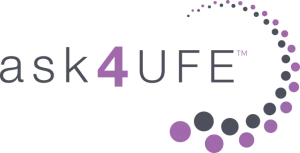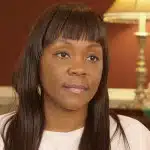In 2000, Carmen Mckever was diagnosed with uterine fibroids the size of pinheads. Little did she know these small tumors would impact her life in a big way.
Like many women, Carmen discovered she had fibroids accidentally. While visiting her gynecologist to remove an ovarian cyst, she also found out she had fibroids. “[My gynecologist] removed the ovary and she told me, ‘Oh, by the way, I saw some fibroids in your uterus.’” Carmen explained. “I didn’t think anything of it at that time.”
But in a few years, Carmen started to develop serious symptoms like heavy, long, painful periods—with one cycle leaving her to bleed for one month straight. With a career as a registered nurse, this made her work life unbearable. “Fibroids really impacted my everyday life.” Carmen told Ask4UFE. “Professionally, I am a nurse. At my facility, our uniform is white scrubs. So you can imagine, every month it was like a nightmare.”
But this wasn’t the only uniform Carmen had to wear. During her period, Carmen described having “an arsenal” with her—and on her—to avoid accidents. On any given day she was menstruating, Carmen admitted having to wear a super absorbency tampon, two ultra absorbency maxi-pads, a Depend® adult diaper, and spanx® to hold it all together.
And it didn’t stop there. “I would have a regular maxi pad in the seat of the spanx just in case the super absorbency tampon, the ultra long maxi-pads, and the spanx couldn’t keep it together,” she continued. “I also had all that stuff in my bag just in case I had to change, which was about every hour.”
Not able to tolerate it any longer, she began to explore fibroid treatments. But for women like Carmen, who want an alternative to hysterectomy, finding a doctor who will listen is an uphill battle.
“The help I received from medical professionals was—operate. Hysterectomy. That was it. I just felt like I was being dismissed,” she recalled with emotion. “I oftentimes felt like it was my fault that I had fibroids. That I was wasting people’s time because I was trying to figure out what I was going to do, and not have a hysterectomy, and that was the only answer I was getting. At one point I was even told that I was behind the eight ball.”
After searching for alternatives and getting nowhere, Carmen finally learned about uterine fibroid embolization (ufe) from an acquaintance who also suffered from fibroids. After attending a free ufe hospital seminar given by Dr. John Lipman of Atlanta Interventional Institute, she wanted to hear more.
Around the same time, Carmen’s mother, who also had suffered from fibroids, saw Dr. Lipman on a TV program and encouraged her to meet with him. Describing her mother as her “resource” and “best friend,” Carmen decided to go and get her questions answered.
“[Dr. Lipman] reassured me,” Carmen said. “He made it feel like it was not my fault that I had fibroids. He made sure that I had all the information and that I was well-informed so I could make a logical decision.”
For Carmen, deciding to get ufe was the best decision for her. Recovery was uncomplicated. After resting for four days, she was back at work a week after the procedure. “My pain was nothing compared to the menstrual cramps that I experienced every month,” she described. “It wasn’t anything that I couldn’t handle.”
And that “arsenal” Carmen described? It’s now a thing of the past. “I don’t have to wear a super absorbency tampon or a Depend or a spanx,” she smiled. “And a lot of times I forget I am on my period.”
For Carmen, persistence paid off and she got to avoid an unnecessary surgery. But what about the thousands of women who are fighting that same fight?
“I’m hoping that I can use this platform to let other women know about ufe,” Carmen emphasized. “Women who are afraid to wear white pants and who feel a gush of blood flowing every time they get up from their seat. Who pray they have not messed up their seat at work or messed up the back of their pants or their nice skirt when they go out to dinner or they go to church. I hope that by doing this, I let other women know—just like I found out—that there is an alternative.”
Read About Another Woman’s Experience







